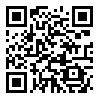مجله رویش روانشناسی از دادن گواهیهای کاغذی معذور است. لطفا تقاضا نکنید. همه گواهی ها در صفحه شخصی کاربران موجود است.
year 14, Issue 8 (atuomn 2025 2025)
Rooyesh 2025, 14(8): 119-128 |
Back to browse issues page
Download citation:
BibTeX | RIS | EndNote | Medlars | ProCite | Reference Manager | RefWorks
Send citation to:



BibTeX | RIS | EndNote | Medlars | ProCite | Reference Manager | RefWorks
Send citation to:
Zareinezhad M, Nejat M, Piriaei H, Garavand H. (2025). Comparing the effectiveness of cognitive behavioral therapy and transcranial direct current stimulation on marital conflicts in women with sexual desire/ interest disorder and depressive symptoms. Rooyesh. 14(8), 119-128.
URL: http://frooyesh.ir/article-1-6594-en.html
URL: http://frooyesh.ir/article-1-6594-en.html
1- Department of Psychology, Bo.C., Islamic Azad University, Borujerd, Iran.
2- Department of Psychology, Alzahra University, Tehran, Iran. ,Mehrinejat8194@gmail.com
3- Department of Mathematics, Bo.C., Islamic Azad University, Borujerd, Iran.
4- Associate Professor, Department of Psychology, Faculty of Literature and Humanities, Lorestan University, Khorramabad, Iran.
2- Department of Psychology, Alzahra University, Tehran, Iran. ,
3- Department of Mathematics, Bo.C., Islamic Azad University, Borujerd, Iran.
4- Associate Professor, Department of Psychology, Faculty of Literature and Humanities, Lorestan University, Khorramabad, Iran.
Abstract: (105 Views)
This study aimed to compare the effectiveness of cognitive behavioral therapy (CBT) and transcranial direct current stimulation (tDCS) on marital conflicts in women with sexual desire/arousal disorder (SDID) and depressive symptoms. The present study was a quasi-experimental study with a pre-test-post-test design and a control group with a two-month follow-up period. The statistical population of the study consisted of women with SDID and depressive symptoms who referred to counseling centers in Qom in 2024. 45 people were selected using a convenience sampling method and randomly assigned to three groups: experiment 1 (15 people), experiment 2 (15 people), and control (15 people). The Marital Conflict Questionnaire Revised (MCQ-R; Sanaei et al., 2000) was used to collect data. Data analysis was performed using repeated measures analysis of variance. The results of the between-group comparison indicated that there was a significant difference between the follow-up scores of the CBT and tDCS intervention groups compared to the control group (P<0.05); in addition, the results of the pairwise comparison of follow-up scores between the CBT and tDCS groups showed a significant difference (P<0.05). In summary, it can be concluded that CBT had a greater effect on reducing marital conflicts in women with SDID with depressive symptoms than tDCS.
Keywords: Marital Conflicts, Depression, Sexual Desire/ Interest Disorder, Transcranial Direct-Current Stimulation, Cognitive Behavioral Therapy.
Type of Article: Research |
Subject:
Clinical Psychology
Received: 2025/09/21 | Accepted: 2025/09/29 | ePublished: 2025/11/1
Received: 2025/09/21 | Accepted: 2025/09/29 | ePublished: 2025/11/1
Send email to the article author
| Rights and permissions | |
 |
This work is licensed under a Creative Commons Attribution-NonCommercial 4.0 International License. |





